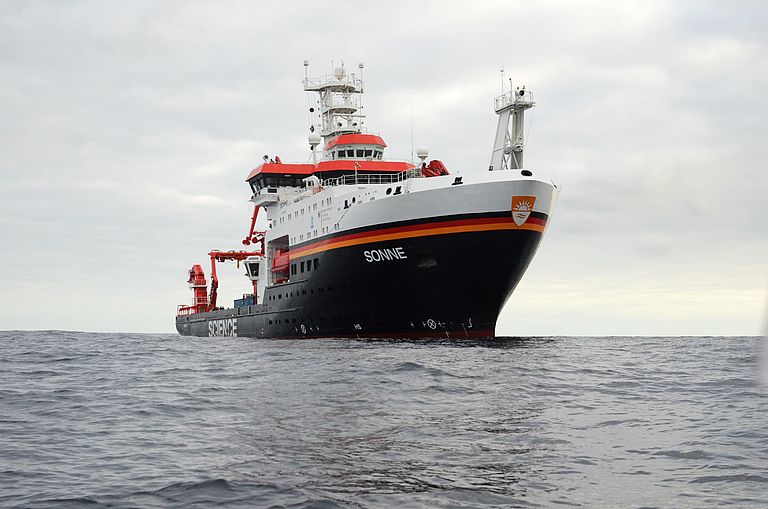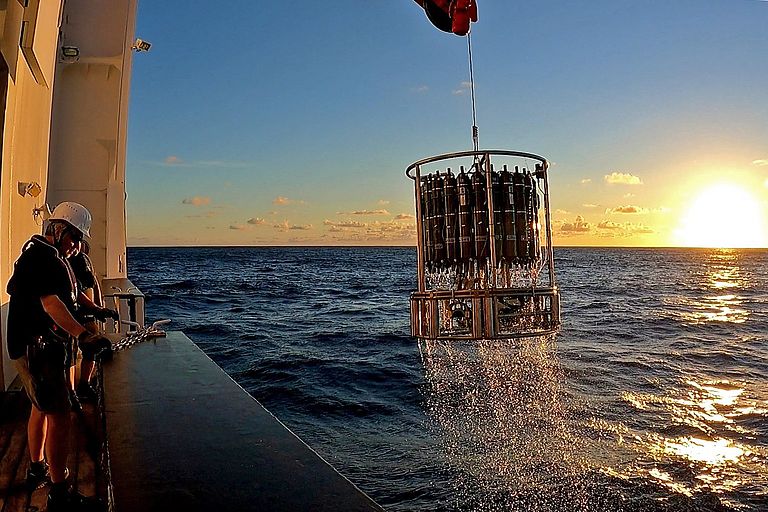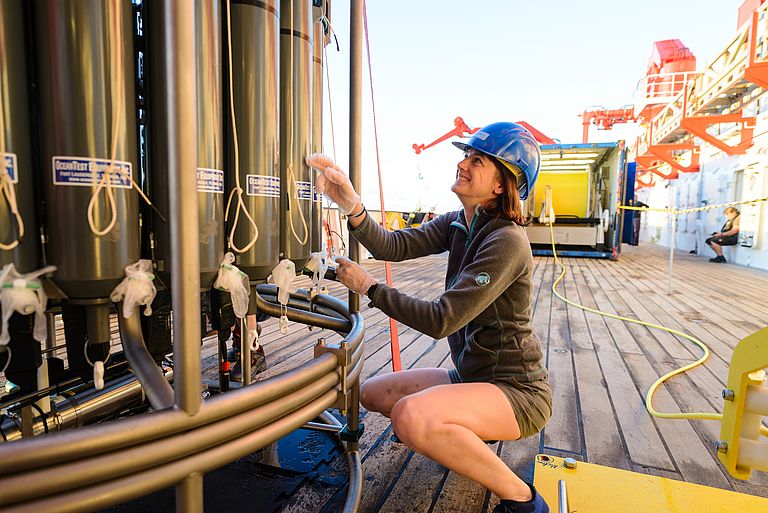Measuring plankton growth across the Pacific Ocean
Expedition SO298 crosses the Equatorial Pacific to assess nutrient supply, plankton productivity and ocean carbon uptake
Phytoplankton, microscopic plants living in the surface ocean, do not only need carbon dioxide (CO2) and sunlight to thrive, but also depend on nitrogen and the trace element iron. In the Equatorial Pacific Ocean, one of the most remote and least explored ocean regions on our planet, these elements are rather scarce. However, phytoplankton productivity is crucial for the ocean’s ability to absorb carbon dioxide and mitigate impacts of climate change. To better understand the effects of trace element limitations on phytoplankton growth and carbon uptake, an expedition with the German research vessel SONNE follows a transect along the equator from Guayaquil (Ecuador) to Townsville (Australia). The seven weeks long cruise SO298 is funded by the German Ministry of Education and Research (Bundesministerium für Bildung und Forschung, BMBF) in the framework of the GEOTRACES programme. It is led by Professor Dr. Eric Achterberg, marine biogeochemist at GEOMAR Helmholtz Centre for Ocean Research Kiel and involves a range of national and international research groups from many different nationalities.
“At the eastern side of the Equatorial Pacific, around the Galapagos Islands, a supply of nutrient-rich deep waters causes phytoplankton growth that is limited by the available amount of iron. Towards the western side of the Equatorial Pacific, the nutrient nitrogen is expected to limit phytoplankton growth. We therefore expect a low productivity along our transect caused by a low supply of nutrients. This will likely result in a release of carbon dioxide from the ocean to the atmosphere in this part of the ocean”, Professor Dr. Achterberg explains.
On their way, the researchers sample waters and particles from the surface ocean to the seafloor. They use specialised equipment for the collection of trace metals to avoid contamination from equipment and the ship. They also measure the uptake or release of atmospheric CO2 by the ocean and conduct growth experiments with phytoplankton. “We expect that our findings will have global significance for understanding the chemical environment in which ecosystems operate and how productivity and the uptake of atmospheric carbon will change in a future warmer ocean”, Professor Dr. Achterberg emphasises.
Trace elements in the Equatorial Pacific come from rain, rivers such as the Guayaquil River in Ecuador, sediments on continental shelves and deep ocean hydrothermal vents. Large underwater volcanoes and hydrothermal vents can be found close to the Galapagos Islands and along the East Pacific Rise, a mid ocean ridge situated between spreading tectonic plates where magma from the earth’s mantle rises. The vents emit hot fluids containing high concentrations of iron and other elements into the deep ocean at 2000 to 2500 metres of water depth. Plumes of iron are thought to be transported southwards in deep waters and to reach the surface waters in the Southern Ocean, which is the largest region in the world’s ocean with phytoplankton growth limitation by iron.
Based on measurements as well as tracers and modelling approaches, the researchers will assess iron inputs from hydrothermal vents, transport and mixing and their impact on Southern Ocean productivity. During the previous GEOTRACES expedition SO289 in February and March 2022, they were able to detect clear signals in the water column of the western side of the South Pacific Ocean from the underwater volcanic explosion at Tonga in January 2022.
The current cruise is taking place during a transition period when the La Niña will change to El Niño, which is the warm phase of the El Niño/Southern Oscillation (ENSO). It is associated with a band of warm ocean water that develops in the central and east-central Equatorial Pacific, including the area off the Pacific coast of South America. La Niña is the colder counterpart of El Niño. “We anticipate seeing a warming of the surface ocean and a weakening of the east to west flowing currents in the Equatorial Pacific, and therefore may also sail more slowly to Australia”, Professor Dr. Achterberg explains. “The warmer surface ocean may result in a lower supply of essential nutrients to the surface ocean and therefore a reduced productivity. We will carefully assess the effects on ocean productivity of the transition from La Niña to El Niño.”
Expedition SONNE SO298
14 April 2023 – June 2 2023
Guayaquil, Ecuador – Townsville, Australia

Research vessel SONNE off Chile during the expedition SO244 GeoSEA. Photo: Jan Steffen, GEOMAR

A rosette water sampler with water samples is brought back on board the German research vessel SONNE on expedition SO289 in the South Pacific. Photo: Lea Blum, GEOMAR

Working with the rosette water sampler on board the German research vessel SONNE during expedition SO289 in the South Pacific. Photo: Lea Blum, GEOMAR


